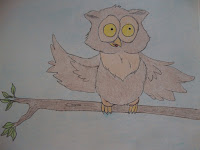It is a timeless and
enchanting childhood tale—a true fairy tale and quite endearing.
Just about anyone can relate to this tale. We can all recall a
favorite toy that comforted us as a child. (Perhaps you are a child
and receive great comfort from that doll or bear that you have hugged
'till the seems begin to pop!) There are those very special toys
that we have grown attached to (and perhaps they have grown attached
to us as well). The theme of love, friendship, and holding on to them
when adversity comes, rings throughout this tale. Nevertheless, we
all need to learn to let go as well. Sometimes it is deeply hard;
yet, “to everything there is a season.” The boy in this tale had
to let go of that dear Christmas gift he had received—that doll
that had comforted him through a long illness. But letting go is at
times necessary for the benefit of our own good and the good of
others. The boy in this story needed to let go for the saving of his
life. This theme appears in a number of other stories. I cannot
help but think of other animal stories where a boy or girl needed to
“let go” by releasing an animal back into the wild. Our earthly
goods and treasures need from us a “letting go” as well. They
will all pass from us eventually. By letting the velveteen rabbit go,
magic was able to be performed for the transformation and release of
that precious bunny.
Later, the fairy comes and
the rabbit becomes “real”; but that rabbit and boy never forgot
each other. Just because we must let go doesn't mean we will forget
that object of affection. This is true when we face the death of a
loved one. We must let them go, but we must never forget them.
The stitch horse is an
interesting character in this tale. I had a child once say to me,
“The stitch horse seemed to be so wise and know how a toy becomes
real as if he had experienced it; yet, he still looked just looked
like an old tattered toy (at least he did in the illustrations). I
have pondered this much since then. I have come to the conclusion
that not all toys become real. Only special ones are transformed and
become real. It is real love that does this. It happens to a toy
that is used a lot and enters the deeper affections of the toy's
owner. Perhaps the horse, who had obviously been in the possession
of the boy a long time, never entered that level of affection that a
child sometimes places upon a particular toy. Perhaps the stitch
horse had had more than one owner, and perhaps he had been passed
along to several owners. Perhaps he had seen a number of older toys
who did indeed enter into that place of endearment between a child and a
toy. Yes, perhaps he did see these transformations of others and was
a witness of the fact, though he wasn't ever chosen to receive that
magical moment himself.
It might make us sad to
contemplate these thoughts regarding the stitch horse, but alas, be
not saddened. The stitch horse has a very special job in helping
other toys along the way. Each of us have a purpose in this life
too. We are not all chosen to do those seemingly noble and venerable
deeds; but we all have a job to do in this life, doing our best in
whatever our job in life happens to be. We can be a blessing to
others whether we be a royal monarch or simply cleaning someone's
boots. We are all special to someone. We all have value, not
because we be esteemed of others, but rather, because we are loved.
A
Word from Ollie
Whooo!
Whooo! I really like that story, don't you? Very dear,
heart-warming, and good for us to hear. How hard it is for us to let
things go! But that is when miracles can happing. Christmas is upon
us,and many will soon receive gifts—just as the boy received that
rabbit in his stocking. Do not grow too attached to things though.
They are temporary, fleeting, evanescent. Evanescent is a
nice word for fleeting or transient. The life we possess can be
described that way. Give of yourself while you can, and remember the
greatest gift ever given: that sacrificial gift of love.
A
Christmas to Remember
Years
ago as a child I remember some precious Christmas gifts. I received
a bear and a Smurf train that moved around and around the Christmas
tree. My sister received a velvetine rabbit—so much like the one
in the story. For years now, that old velveteen rabbit has been up
in the attic. I recently brought it down and displayed this cute and
festive hugable in the rocker in our living room. I think he looks
rather nice there. The rabbit is still as cute as it ever was, but
sad to say, he still has yet to become “real.” Perhaps it will
happen this Christmas.
The
Crafty Corner
This
Christmas and holiday time, perhaps you will consider making a simple
Christmas craft that is very functional. A Christmas mini stocking!
I have made several of these. Use various fabrics to give variety to
the stockings. Sew two different fabrics together. That gives a
whole new look to it. I got some metallic gold fabric. That really
sparks it up. Sew on buttons, jingle bells, or embroider a design or
pattern. These stockings I have made are available on Etsy.com. See
them at
https://www.etsy.com/listing/542550846/small-christmas-stockings-felt-plaid?ref=shop_home_active_6
https://www.etsy.com/shop/StorybookCraftsShop
























